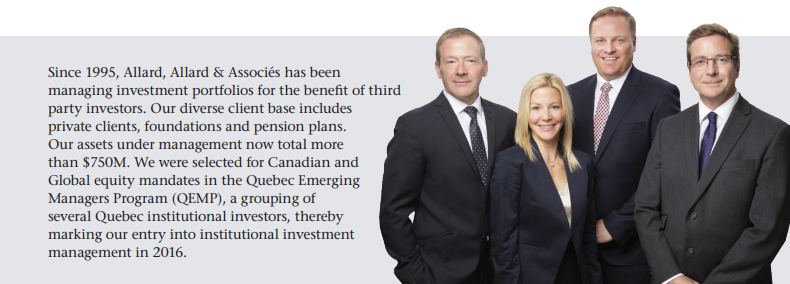A Tale of Two Markets
Major stocks markets around the world advanced substantially over the past year, offering returns of more than 20% overall.
In Canada, the S&P TSX rose 22.9% led by its best performing sectors: information technology (65%) and the gold subsector (43%) and together, they explain a quarter of the Canadian market returns for 2019. Ironically, the former reflects optimism for growth while the surge in the gold sector reveals a more cautious outlook. Despite its best year since 2009 in which 10 of its 11 sectors had positive returns, the breadth in the strong performance was not the same across the board as 32% of the stocks in the S&P TSX had negative returns. Even more worrisome, the 10 best performing stocks in the index accounted for half of its annual return.
2019 was a year of geopolitical tensions which included the Sino-American trade war, Brexit as well as monetary policy decisions. Gradually though these developments became favorable as the year progressed as monetary policies were more accommodating through key rate cuts and political tensions eased, with the progress of trade negotiations between the United States and China. The risk of a Brexit without an agreement also dissipated. Although these risks have subsided, they have not disappeared, and remain at the forefront of investor’s minds in 2020.
Outlook for 2020: An enviable positioning
Taking a step back, there are several positive elements that should prove favorable for 2020: both in the United States and in Canada, the economy is doing well and the unemployment rate is at its lowest level in nearly 50 years. Interest rates and inflation are under control and earnings growth remains strong. Presidential elections south of the border are usually supportive of the stock markets. Although the risks are basically moderate, we are aware that economic cycles do not last forever and therefore remain vigilant.
Our business-like approach to investing, thinking like owners as opposed to speculators, should translate into good news for us in 2020 given that our portfolios have enviable valuations, balance sheets, profitability and cash flow characteristics. For example, the valuation multiples (price/earnings) of our Canadian equity portfolios stands at 14.7 times 2019 profits compared to 23.2 times profits for the entire Canadian market (S&P TSX) and 28.8 times profits for the American market (S&P 500) and more than 20 times profits for global equities. As a result we find our equity portfolios particularly attractive in relation to all the stock markets around the world. For these same reasons our portfolios also compare favorably to the other asset classes such as real estate, infrastructure and bonds which currently have extravagantly high valuations. History does not repeat itself but it does often rhyme. In our opinion, just as we experienced during the tech bubble, we expect the attractive valuations and the financial strength of the companies held in our portfolios to lead to significant outperformance when the enthusiasm for investments whose valuations are out of proportion and unsustainable, fade. It was with this same approach that resulted in our Canadian equity portfolios generating strong, positive returns in 2001 and 2002 while the overall stock market was in a downward spiral. Furthermore, the fact that our portfolio outperformed in the last quarter of 2019 suggests that a trend reversal is underway.
“ The cost of performing well in bad times can be relative underperformance in good times ” – Seth Klarman – value investor
Did you know?
RRSPS, TFSAS AND MANAGEMENT FEES
To be included in your 2019 income tax return, your RRSP contribution must be made on Monday, March 2, 2020. The maximum RRSP contribution limits are $26,500 for 2019 and $27,230 for 2020.
For the TFSA, since January 1, 2020, your contribution room has increased by $6,000. Therefore, the total contribution room for TFSAs since its inception in 2009 now stands at $69,500.
Our fees for non-registered accounts are tax deductible, so please include them on your tax return and keep your quarterly invoices.

Author(s)

